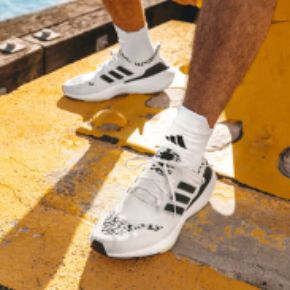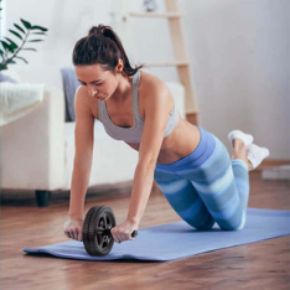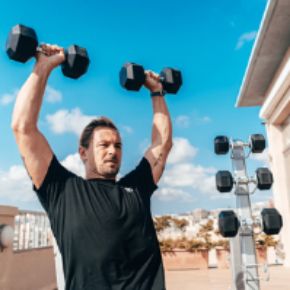The essence of trail running lies in the experience of being outdoors, surrounded by nature, and breathing in the fresh air.
Trail running can be a great way to explore the outdoors and connect with nature. It allows runners to escape the noise and traffic of urban areas and experience the tranquillity and beauty of natural landscapes.

In addition to the mental benefits of trail running, it can also provide a more challenging physical workout than road running. Running on uneven terrain and up and down hills requires more use of stabilising muscles and can provide a greater cardiovascular workout than running on a flat surface.
However, trail running also requires more caution and preparation than road running. Trails can be rocky, slippery, or steep, and runners must be aware of potential hazards such as tree roots and rocks. Hence, trail runners need to be kitted in the right gear, wear appropriate footwear with good grip, and carry any necessary supplies such as water, food, and first aid equipment.
What to wear when going for a trail run
You should consider several key items when dressing and preparing for trail running. The types of clothes and shoes play a critical part in your trail running experience.
Clothes:
For a country like Malta, which is usually warm, you want to wear breathable clothing that can wick away moisture. This includes quick-dry fabrics or performance apparel specifically designed for running.
It is also important to appropriately accessorise items such as sunglasses, hats and headlamps if needed at night. Additionally, a hydration pack or water bottle can be essential when training longer distances until you become comfortable carrying all your supplies during your runs.
When running on a grey day, wearing clothes that protect you from the elements, including cold winds and rain, is essential.
Shoes
Because you may be running on uneven surfaces, it’s best to wear shoes specifically built for trail running; shoes like the Terrex range from Adidas and the extensive range of trail shoes from Salomon are great choices.
Trail shoes usually have a more aggressive tread pattern when compared to road running shoes, which helps provide better grip and traction on uneven terrain. Some trail running shoes may also have features such as rock plates or extra cushioning to protect the feet from sharp rocks or roots on the trail.
Choosing the right pair of trail running shoes is important based on your needs, such as the type of trail you'll be running on, your foot type, and personal preferences for fit and comfort.
Here are a few things you should consider when choosing a trail shoe:
- Comfort
- Grip
- Wealth
- Cushioning
adidas Terrex Agravic Flow 2 Trail Running Shoes
What to do before you buy a trail shoe
Identify the Right Features For You
When searching for trail running shoes, it’s important to think about the features that will benefit you most. Are you looking for traction? Comfort? Lightweight design? All of these are considerations when choosing the right trail running shoes.
Some popular features in trail-running shoes include rock plates, reinforced toe caps, multi-directional lugs, and waterproof or water-resistant materials.
Salomon Hypulse Trail Running Shoes
Test Several Pairs Before You Buy
Don’t be afraid to try on several pairs of trail running shoes before committing to one. Try out different options from various brands and manufacturers to get an idea of what fits your needs best in terms of both comfort and support. If possible, take them outside on the run to feel how they move with your feet and legs as you tackle rocky paths and wet patches.
Comfort is key
Many people forget this part, but it’s incredibly important - Is the shoe comfortable? While no running shoe is perfect for everyone, a quality pair should feel good after wearing them for a few hours to keep using them over long distances without discomfort. Comfort is key here, so consider factors such as cushioning and footbed design before making a purchase decision.
Pay Attention To Weight & Fit
Most running specialists agree that appropriate fit is one of the most critical aspects of any pair of running shoes-it can be the difference between finishing an ultra or tapping out early due to foot pain or injury prevention issues (which should always come first).
When buying trail running shoes, pay attention to how they fit normally and adapt while going uphill and downhill while still being responsive enough (but not too much) during rough terrains. Additionally, consider weight since many ultrarunners believe even shaving off 100 grams from their typical setup can make a difference on race day.
Trail running can be a rewarding and exciting outdoor activity that allows you to connect with nature and challenge yourself physically. However, preparing correctly is important by selecting the right gear and equipment, checking trail conditions, and listening to your body during training. You can enjoy a safe and successful trail running experience by taking the necessary precautions and avoiding common mistakes.
Whether you're a beginner or an experienced trail runner, the key is to have fun, embrace adventure, and appreciate the beauty of the natural world. So, get out there, hit the trails, and enjoy the ride!
What you shouldn’t do when preparing for a trail run
Don’t assume its business as usual:
Trail running is difficult to compare to other races due to the vast differences in terrain. The technicality and elevation change level can vary greatly from one trail to another. This unpredictability makes trail running exciting as runners get outside and explore different trails.
Don't try a new pair of shoes or gear on race day: It's important to test your shoes and gear beforehand to ensure they fit well and are comfortable.
Don't overtrain or push yourself too hard: Give your body time to rest and recover to prevent injury and burnout.
Don't ignore your body's signals: If you experience pain, discomfort, or fatigue during training, listening to your body and adjusting your training accordingly is important.



























































